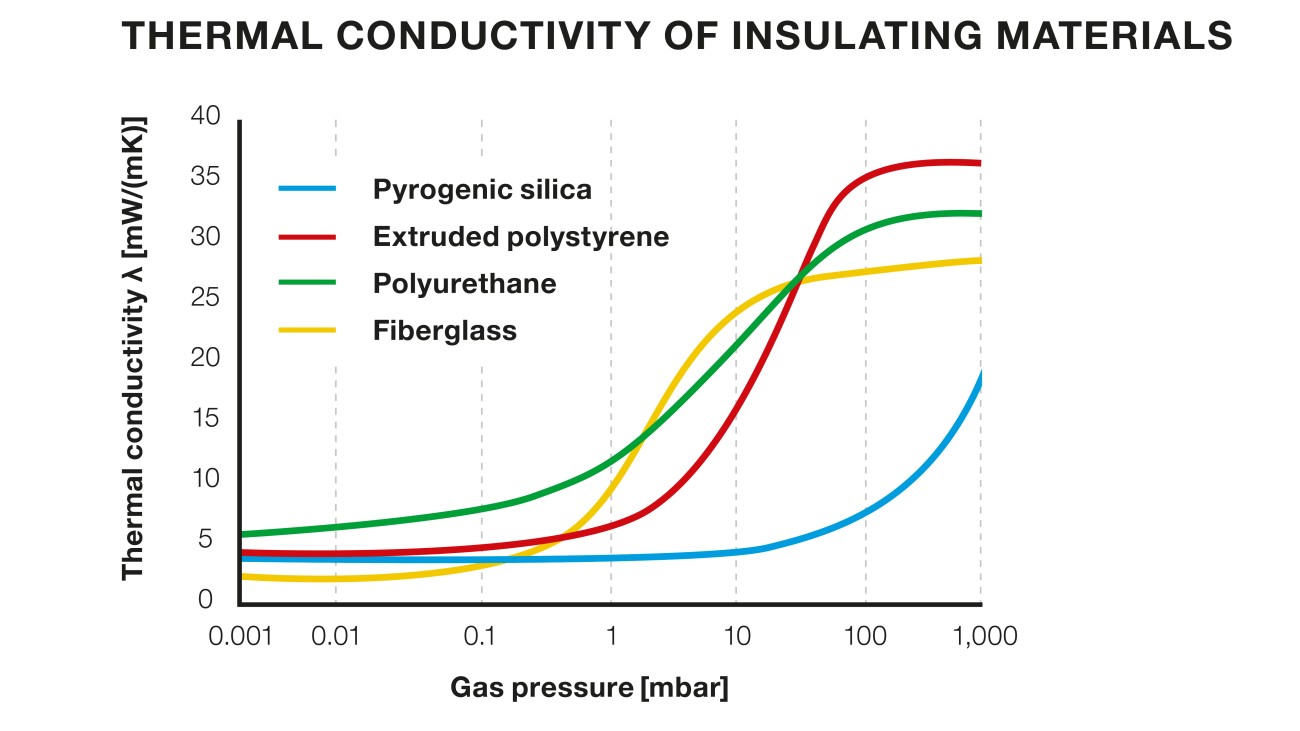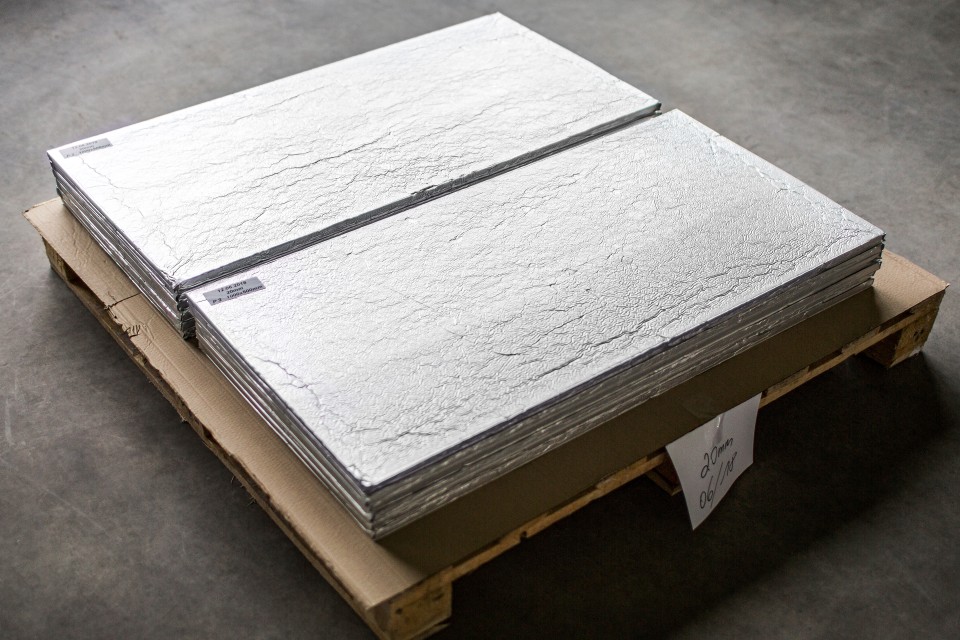
Nothing insulates quite like nothing
Oct 01, 2018 Read time: approx. MinutesMinute
Advantages in a vacuum
In the world of insulation technology, vacuum insulation panels (VIPs) are the top of the line – especially when filled with HDK® pyrogenic silica from WACKER. The Vitec company, based in Ilsenburg, Germany, manufactures custom VIPs upon request for use in fire doors, cold-storage rooms or in construction.
Vacuum is what physicists call the absence of material in a given space. As a general rule of thumb, evacuating the residual air within an insulation panel increases its insulating effect by a factor of six or seven.
The underlying principle is quite simple: by preventing the gas molecules of the air from transferring heat, a vacuum can produce extremely low thermal conductivity values of less than 0.004 W·m−1·K−1. This allows manufacturers to create insulation panels that, while just two centimeters thick, have the insulating capacity of standard panels 12 to 14 centimeters thick. Applications cover a wide range: VIPs do an equally good job of protecting thermally insulated packaging, refrigeration units, cold-storage rooms, hot-water tanks, fire doors, building exteriors, floors and flat roofs from heat and cold.
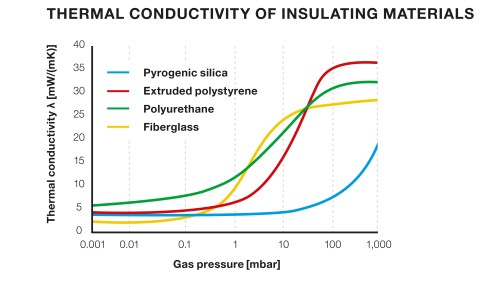
HDK® pyrogenic silica insulates significantly better than comparable insulating materials, even at relatively high gas pressure. At low pressure, it offers the best long-term stability. (source: ZAE Bayern (Bavarian Center of Applied Energy Research))
Microporous silicon dioxide
Suitable filling materials for VIPs include rigid foams, glass fiber and – most of all – HDK® pyrogenic silica. “HDK® is a highly branched, microporous form of silicon dioxide with countless tiny gas pores that make its density very low,” explains Dr. Jörg Heinlein, a WACKER chemist in charge of technical support for this product group. The highly branched morphology of pyrogenic silica is extremely effective at suppressing heat transfer, which is what makes it such an outstanding insulator. Other advantages of VIPs that incorporate HDK® are their excellent dimensional stability and long-term performance. Plus, the vacuum in a VIP made with HDK® does not have to be as high as it does with other filling materials.

Finished vacuum insulation panels at Ilsenburg-based Vitec in Germany, waiting to be packed. Creating a vacuum increases the insulating effect of the processed insulation material by roughly a factor of seven.

Standing outside Vitec’s HQ in Ilsenburg, Germany (from left): Hannah Ullrich (WACKER sales manager), Joachim Luther (Vitec managing director), Olaf Jansen and Ralf Frohnwieser (Vitec sales team), and Dr. Jörg Heinlein (WACKER technical support).
It all began with insulated doors
These properties are all appreciated by the Vitec company, which was spun off from its parent company – Torlit – in 2008. Both companies share the new site in Ilsenburg, Germany. Torlit manufactures insulated doors for warehouses, cold-storage rooms and other areas with enhanced safety requirements; its subsidiary, Vitec, is located next door and produces the vacuum insulation panels that are built into Torlit’s insulated doors.
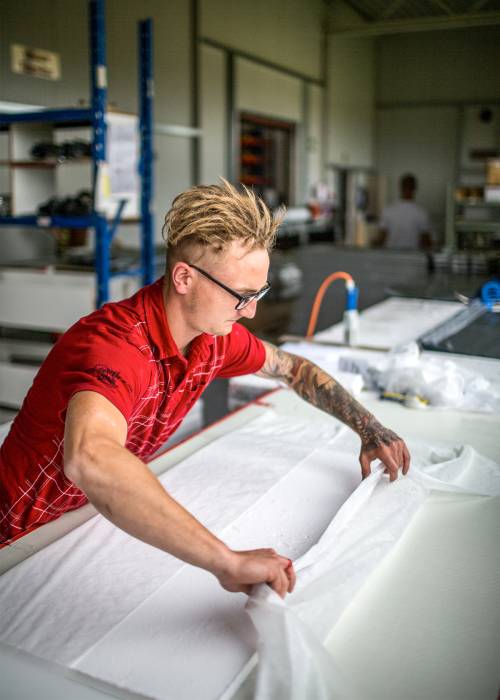
An employee prepares an insulation panel so that it can be packed in protective film and then have a vacuum applied to it.
The use of vacuum insulation panels has allowed Torlit to reduce the thickness of their door insulation from 110 millimeters to 20. Joachim Luther, the managing director of both Torlit and its offshoot Vitec GmbH, put forward another key argument for using HDK® as the core material for VIPs: “The rule of thumb is that if something insulates well, it burns well too.” But, he explained, silicas are non-flammable, which makes them ideal for fire doors. “Thanks to silica, we’ve been able to make our doors thinner – and lighter too – while at the same time making them better insulators and improving fire safety,” says Luther, summarizing the advantages.
As specialists for fire doors and doors for cold-storage rooms, Torlit engineers are very familiar with the advantages and disadvantages of many insulating materials. The use of mineral wool, for instance, is discouraged in cold-storage areas, because it draws moisture and then loses its insulating properties. Polystyrene, the insulating material used most often in construction applications, needs to be very thick. And the first generation of Torlit fire doors used inorganic foams based on ceramic particles that had been formulated with phenolic resins, even though these were found to be quite brittle. After a brief experimental phase, the Torlit engineers ultimately decided about ten years ago to make their doors almost exclusively with vacuum insulation panels filled with HDK® from WACKER.
Flush fitting
Fire doors and doors for cold-storage rooms are generally customized and produced on demand. The built-in vacuum insulation panels are made individually as well so that they fit flush in the doors. That means that Torlit relies on a very fast, flexible supply of VIPs.
“We deliver fire doors of all sizes within two to three weeks, which wasn’t convenient as regards the time it takes VIP manufacturers to deliver – they often need six to eight weeks,” says Luther. “To produce and deliver our doors faster, we absolutely had to make the VIPs ourselves.”
The principle underlying VIP manufacturing is simple: an insulating material of the desired thickness – usually a few centimeters – is inserted into a foil bag. A vacuum is then pulled and the bag heat sealed. Processing HDK® in VIPs requires specialized engineering expertise, however, which Vitec has acquired over the past ten years. The following are some of the challenges involved:
- Keeping the HDK® dry,
- Emptying large volumes of a loose, dust-forming powder from drums, transporting and blending the material, and compressing it into molded panels,
- Retaining the good flow properties of HDK® during processing: obtaining molded panels that are as homogeneous as possible means using silica that does not clump or cake
Vitec uses HDK® as a powdered blend containing fibers and other components, one of which is what is known as an opacifier. An opacifier either absorbs or reflects the thermal radiation entering the insulating material from outside, thus reducing the thermal conductivity of the VIP even more.
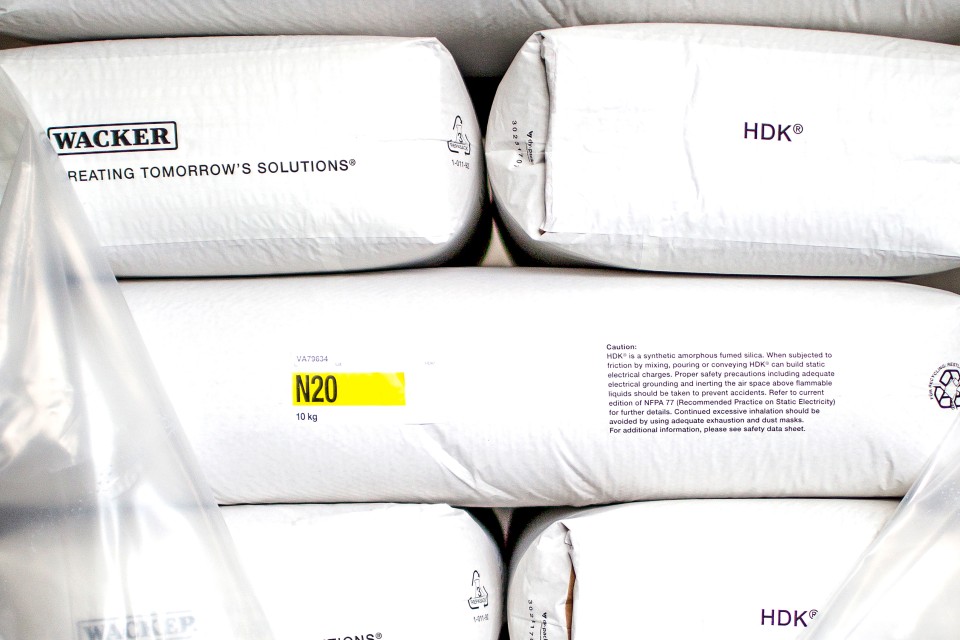
Advantages of HDK® ehen used in vacuum insulation panels (VIPs):
• Its microporous structure makes HDK® an outstanding insulator for VIPs, even when the vacuum strength is relatively low
• HDK® delivers excellent long-term insulating properties
• HDK® acts as an extremely robust support element, allowing the VIP to retain its shape despite high external pressure
• HDK® is non-flammable
• VIP cores made of HDK® can be reused
Anti-moisture barrier
Once compacted, the molded panel made from the HDK® blend is placed in a specially designed foil bag. The foil consists of multiple thin layers of polymer and metal, both to ensure the most effective possible barrier to gas and moisture penetration and to maintain the insulating properties of the VIP for as long as possible. The engineers at Vitec anticipate that their vacuum insulation panels will be able to serve their purpose for decades. And this is another reason why HDK® is superior to alternative fillers: glass-fiber cores and polymer foams, for example, age faster than pyrogenic silica, because pressure rises more quickly within these cores, and the insulating properties then deteriorate accordingly.
Certain specialty applications – such as insulation for flat roofs and roof-top patios – require particularly robust panels, and for these the Vitec product line includes VIPs that are encapsulated with an extremely hard, glass-fiber-reinforced plastic. “You can even walk on it at the construction site and nothing will happen,” says Ralf-Geoffrey Frohnwieser, a member of the Vitec sales team.
For building insulation, the company also offers VIPs with an edging roughly ten millimeters thick and made of traditional insulating material (extruded polystyrene; XPS) so that the panels can still be worked with. “That allows you to compensate for typical construction tolerances,” Frohnwieser explains. It also suppresses heat transfer in the joints between individual VIPs. VIPs for roof and exterior insulation are custom-made and delivered to the builders along with installation plans.
“Pyrogenic silica is non-flammable, which makes it ideal for fire doors.”
Joachim Luther, Managing Director, Vitec GmbH
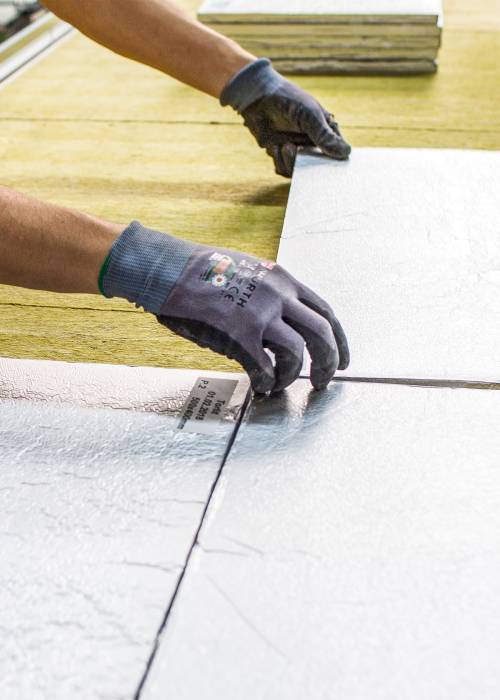
If vacuum insulation panels are intended for use on a construction site, Vitec customizes them and automatically supplies the installation plans as well.
Special-purpose containers for used lithium-ion batteries
In another recent development, Vitec has successfully devised an innovative solution aimed at collection bins for spent lithium-ion batteries. These safety containers are used for collecting spent batteries from electric vehicles, electric bicycles or other relatively large electrical appliances, and then for hauling them to disposal companies. Transporting them is subject to strict government standards, because lithium-ion batteries can potentially ignite spontaneously, leading to fires with temperatures exceeding 1, 000 °C. The containers must be made so that the temperature of their exterior walls will not exceed 100 °C in the event of such a fire. “This project perfectly combined our strengths in metal construction and VIP production, and we worked with our partner to develop a collection bin that would meet all of the customer’s demands just as perfectly,” observes Olaf Jansen, Vitec’s head of sales.
The VIPs are precisely arranged in the container to create an inner chamber with excellent insulating properties. In addition, a metal laminate protects the VIPs from damage that could arise during activities such as loading. Jansen sees these and similar applications as representing the future of Vitec, which aims to remain flexible and specialized: “We’re not about quantity – our focus is very much on producing and enhancing customized products.”
Contact
For more information on this topic, please contact:
Mrs. Hannah Ullrich
Sales Manager
Pyrogenic Silica WACKER SILICONES
+49 152 093 519 30
hannah.ullrich@wacker.com

